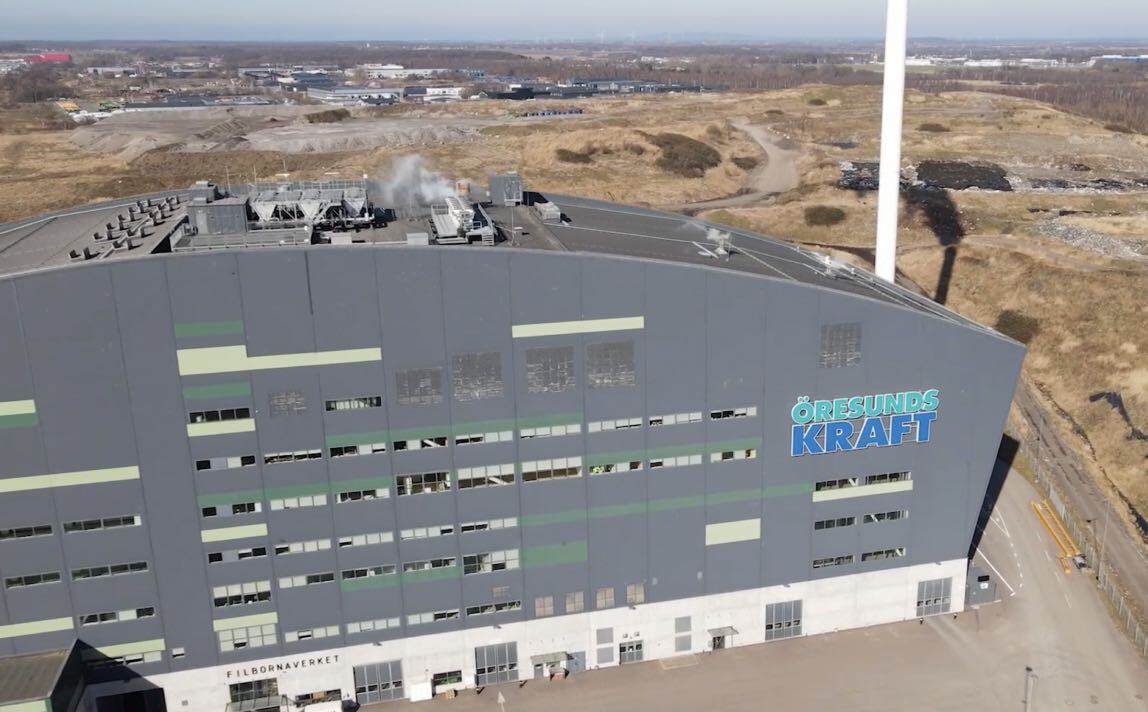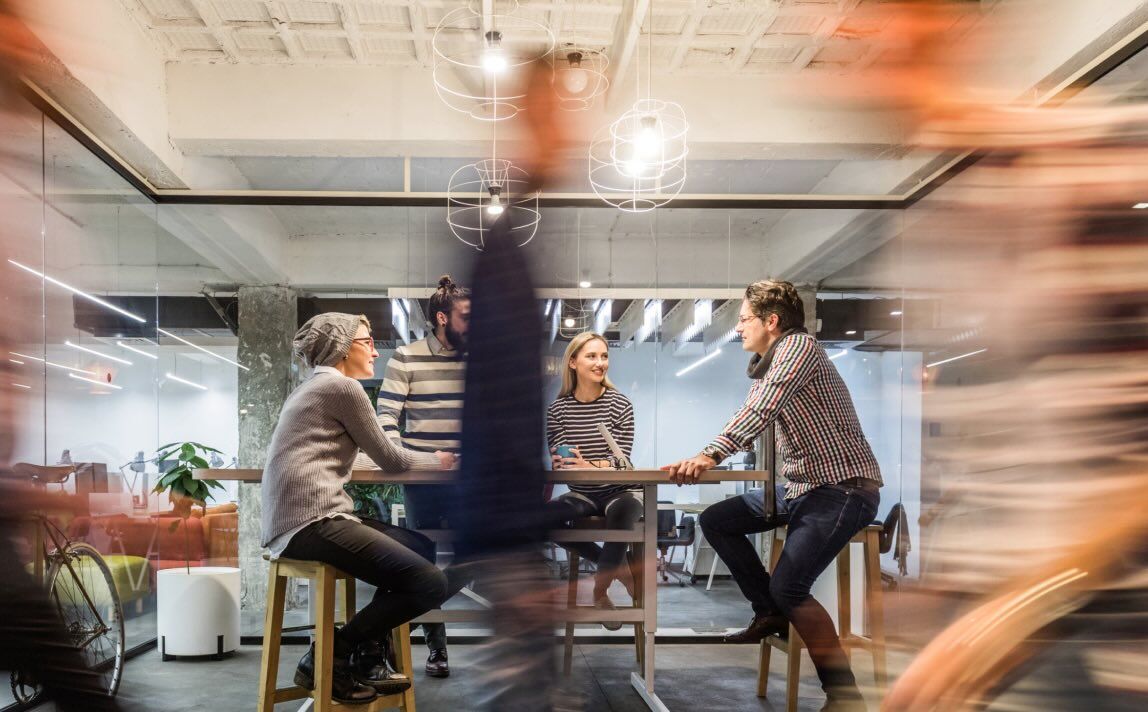
You might not think Information Technology can improve a company’s real estate decisions. But Per Andersson, Director of Digital Workplace at DeLaval, is well aware of the growing connection between the two areas today. As DeLaval renovates a building at their headquarters, they are using Nimway from Sony to understand their workplace utilization. Let’s hear more about their approach, and why this data is giving them a strategic advantage.
N: Tell us about DeLaval and your workplaces, Per. What do we need to know?
P: Absolutely! DeLaval is a global company of around 5000 employees, that supports farmers in everything they need to take care of their cows and the milk they produce. Our employees are located across the world, but our headquarters are in Tumba, near Stockholm in Sweden. Right now, we are rebuilding it.
The office building is old. It was built during the 70s and 80s. Everyone knows it’s old. Management knows its old, and they realized that modernization is needed. We want better, smoother collaboration. We want to improve innovation. And we will accomplish that in a modern, activity-based office. We like to call it: “Collaboration made easy”.
To use the modernized buildings as effectively as possible, we need to know how things are used. That’s why the facility teams wants occupancy sensors and utilization data.
"We want better, smoother collaboration. We want to improve innovation. And we will accomplish that in a modern, activity-based office."
What will you use the workplace utilization data for?
We will use sensor usage data to modernize our spaces in the best way possible and set up the new spaces efficiently. The office layout, number of rooms, sizes of the rooms, placement of desks in rooms, or in open spaces. And then of course, we work with an interior design firm. They do their magic with color, textiles, and furniture. But the usage data will let us know for certain that our spaces are well designed. You should listen to your gut, of course, but knowing is better.
How will you use the utilization data? What’s the approach for the renovation?
So, our plan is to do a sequenced modernization. We’ll start with a single floor, before rolling out the sensors to the remaining floors. After 2-3 months of usage, we will use the data from the single floor to see what works well, what doesn’t work well.
We’ll talk with people of course. They will tell us rather soon what they think is not working. But we also want to know the truth. For example, we might think it was a good idea to have a lot of small rooms over there, and desks over on the other side of the building, but then the utilization data shows us that it maybe wasn’t the best setup because people aren’t using it much at all. We might even discover our remaining floors aren’t needed for office spaces, and that they could be used for other types of spaces. So, all the usage information will lead to making suitable adjustments on the floor we started with, but it will also make the remaining floors even better from the start.
What is the role of IT in all this real estate development?
The type of department I work in has changed over the years. It used to be called end user services. Nowadays, Digital Workplace services cover everything an employee needs to work. Hardware, software, cloud services, a service portal, a service desk, and on-site technicians.
But now for DeLaval, it also includes smart office systems. Of course in meeting rooms we have the latest conferencing equipment and software, but our smart office also makes it easy to find and reserve available rooms. That’s because of room booking and navigation tools, informed by occupancy sensors that gather data about how the workplace is used.
I have a responsibility to make sure we are getting the data we need, and that the system works. That’s why nowadays, our digital workplace services team works very closely with facility and real estate teams. We both have the same goal, which is to make sure everything works all the time. We try to make sure employees don’t get frustrated when they work with us. So, if they are frustrated, we try to solve it quickly. But even better than that is being proactive. That’s why we are always trying to understand and evaluate all the new types of solutions that are out there.
"Our smart office also makes it easy to find and reserve available rooms. That’s because of room booking and navigation tools, informed by occupancy sensors that gather data about how the workplace is used."
How do you choose a smart office system and get accurate data?
There are so many different types of suppliers of smart office technologies that it can be hard to choose. At previous companies I’ve worked for, I’ve done investigations of different systems. When I started at DeLaval, I knew that DeLaval needed a smart office to rebuild our headquarters in the best way possible. I was mainly concerned about the lack of conferencing equipment in meeting rooms, room booking panels outside of the meeting rooms, and a sensor system to detect occupancy.
So, my idea was to review all the latest systems, and make a choice based on the current market. Nimway from Sony was the best smart office technology for us. We discovered Nimway by visiting other offices. We saw the system up and running, supporting activity-based workplaces, and were impressed by the stability of the system, and the accuracy of the data too. We have now used Nimway for one year and love how reliable it is. The combination of Nimway in our office spaces and conferencing equipment in our meeting rooms is great!
"We have now used Nimway for one year and love how reliable it is. The combination of Nimway in our office spaces and conferencing equipment in our meeting rooms is great!"
Where are digital workplaces heading in the future, Per?
I think what we are seeing now will only continue: digital workplaces that support corporate real estate decisions, while also helping employees use the spaces and collaborate better.
It makes sense. Workplaces are really where employee needs and corporate priorities meet. And in my opinion, end users and real estate don't exactly have the same needs. End users want to be flexible, to know where to go in the building, and have an easy time booking things and finding colleagues. They just want a smooth experience and plenty of space. Real estate teams, on the other hand, want to know how things are used and make decisions with actual data to save costs. That could mean reducing space.
It’s not clear how we solve both things at the same time, but I believe this is the future that digital workplaces can create. I would like to make collaboration maximally easy, while also giving real estate the data they need to make great decisions for the company.
Discover how this customer saved tens of millions of dollars with Nimway.

Öresundskraft used Nimway to understand their activity-based workplace—and improve it.

Sega Sammy made it easy for teams to work together in their shared office space.

Copyright © 2025 Sony Network Communications Europe. All rights reserved